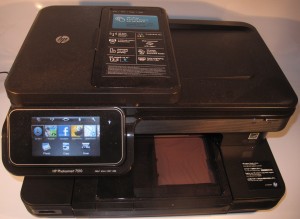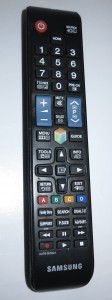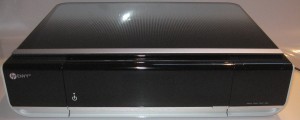Articles
Smart TVs (A Current Affair article) – NineMSN VIDEO
My Comments
From the recent “A Current Affair” broadcast on the Nine Network, it seems to me that the “Smart TV” or “Internet TV” concept is now ready for prime time.
What is this trend all about?
This is where functionality like access to IPTV channels, “catch-up” TV and video-on-demand is now being integrated in to most of the big-name TV sets that are to be sold at the likes of Harvey Norman. It will also include an “app-store” interface so that users can add functions to these sets in a similar way to how they add functions to a smartphone or tablet computer.
Some of the sets will come with an integrated hard disk which will provide PVR functionality. But what wasn’t mentioned was that most of the sets from the big brands, especially LG, Samsung and Sony, will support integration with the DLNA Home Media Network. This means that these sets could play content held on a computer or network-attached storage device that uses this standards-based technology.
Typically, these functions will be pitched at TVs targeted for the main viewing area i.e. the main lounge room or family room. But this kind of function may be added to existing sets through the use of some of the current-issue Blu-Ray players and network-media adaptors like the Sony SN-M1000P network media adaptor.
A few key questions that I have
“TV plus Apps” or IPTV and interactive-TV content?
There could be a fear that this could turn out as “TV plus apps” with the same old TV content plus some apps such as clients for the popular social networks, photo-sharing sites and YouTube-type sites thrown in.
But some providers are making ties with the various manufacturers to set up free and pay-TV front-ends through the IPTVs. Examples of this include Samsung establishing a tie with BigPond TV to provide direct access to that content or most of the manufacturers running ABC iView through their TV sets. It may also open up opportunities like video-on-demand or boutique content services. As well, once there is a level playing field for adding TV services, this could lead to the addition of extra TV content.
If there is a desire to provide new live or on-demand IPTV services, there needs to be support for adding the newer services to existing IPTV equipment. This could be achieved through an always-live app store on these sets. Similarly, existing broadcast content, both editorial and advertising, must be able to support links to apps and interactive front-ends that are accessible to the average viewer with one click of a particular button through the use of interactive-TV content-delivery standards.
This can include applications ranging from interactive games and competitions that are part of children’s TV through “play-along” quiz shows to polls run in conjunction with current-affairs shows which have the option for you to view “extended-version” interviews.
Equipment Useability
A key issue that I have raised in this site was the useability of services like the Social Web on this class of equipment. Typically, the “smart TV” concept prides itself on connection with social-network services like Twitter and Facebook; but there will be the desire to gain access to photo-sharing sites like Flickr and Picasa or gain full benefit from sites like YouTube. These can make use of “smart-TV” services more daunting for someone who doesn’t find themselves competent or isn’t experienced with technology.
An example of this was when I mentioned to a friend of mine about the Pixel Eyes app on the TiVo platform where they could view their Picasa albums through the lounge-room TV connected to the TiVo PVR. I mentioned that they would have to log in to their Google account using the “pick-pick” method of entering their credentials in order to view their pictures on this service and this idea frightened them off it.
The main problems is that different users will want to log in to this common terminal or, in the case of the Social Web, leave comments in relation to what they are viewing. Typically, this will require a fair bit of text entry and most remote controls won’t be fully engineered to cater to this requirement. The user will typically have to work a D-pad or wave a Wii-style “magic remote” around to pick letters from an onscreen keyboard and may have to switch between logical keyboards to use different character sets like numbers, different-case characters or punctuation. Try entering in a Facebook / Twitter / Google username and password that way or “knocking out” a Tweet that way. As well, I have raised in that same article methods in which logging in to these services from devices like TVs and set-top boxes can be simplified and referenced how Facebook achieved a login experience suitable for these devices with their HP ePrint app. This includes being able to change the active user associated with a TV or set-top box to another user.
Similarly, I would look at issues like keyboard support for IPTVs. This is whether a TV comes with a QWERTY-enabled remote or not. The best method for add-on keyboard support would be to use Bluetooth HID connectivity so that a Bluetooth-based wireless keyboard can be used as a text-entry tool. Similarly, the ability for one to plug a standard USB computer keyboard in to the USB port usually reserved for USB memory keys and use this for text entry may make things easier. This would work well with those wireless-keyboard sets that plug in to the computer’s USB port.
A remote that doesn’t have a QWERTY keyboard but uses a numeric keypad for direct-channel-selection or parental-code-entry could use this keypad as an “SMS-style” text-entry interface, something which many nimble-fingered teenagers are used to. This would work better if it used the character-set-selection practices used on popular mobile phones.
Other methods that can be looked at include the use of smartphone apps as virtual remote controls like what Samsung has done for their Android smartphones. Here, a user could download an app to their Galaxy S phone and have this become the TV remote control. This could be extended to ideas like multi-control for interactive applications such as “own-account” operation for Social Web and similar applications with the TV screen becoming a “common monitor”.
What to consider when choosing or using your network-enabled TV
DLNA functionality
The TVs or set-top devices should support DLNA Media Player functionality at least, with preferable support for DLNA 1.5 Media Renderer functionality. Initially this would give you access to content held on your computer’s or network-attached-storage device’s hard disk.
The Media Renderer functionality can allow the TV to be controlled by a UPnP AV / DLNA control point such as TwonkyMobile, PlugPlayer or Andromote on your smartphone or tablet computer, or TwonkyManager on your netbook. In the case of Blu-Ray players and set-top devices, you may even be able to play music from your network storage through your favourite stereo without the need to have the TV on to select the music
If the TV or set-top box offers integrated PVR functionality, look for DLNA Media Server compatibility because this may allow you to play recorded TV shows on other TVs in the house without them needing to be of the same brand.
It is also worth noting that some DLNA functions like DLNA server or Media Renderer may not be enabled by default even though the set has these functions. Here, you may have to go to the setup menus and look for “DLNA control”, “Media Server” or similar options and enable them to benefit fully from these functions.
For further information, it is also worth reading the DLNA Networked Media articles that I have written on this site.
Connecting the set to your home network
When you connect one of these TVs to your home network, I would suggest that you avoid using Wi-Fi wireless connectivity, especially if the TV or set-top box uses a dongle for this connectivity rather than integrated Wi-Fi connectivity. This is because of the fact the Wi-Fi network is radio-based and if anything is shifted slightly between the Wi-Fi router and the TV, you may have service-reliability issues.
Instead, I would recommend that you use a wired method such as Ethernet cable or a HomePlug AV powerline-network setup. The Ethernet-cable solution would work well if the router and TV are in the same room; you have wired your home for Ethernet or you can get away with snaking Ethernet wiring through windows. On the other hand, the HomePlug solution would work well for most users who don’t want to or can’t lay new wiring through their homes because this uses the house’s existing AC wiring.
In fact, if you are renovating or rewiring your home, it may be worth considering wiring the house for Ethernet and making sure you have an Ethernet connection in the main TV-viewing areas of the house. This may be achievable if you have an electrician who is competent or knows one who is competent with communications or data work doing the job.
Conclusion
This site will have regular coverage of home media network issues that will become of importance as we head down the the path towards online home entertainment.




